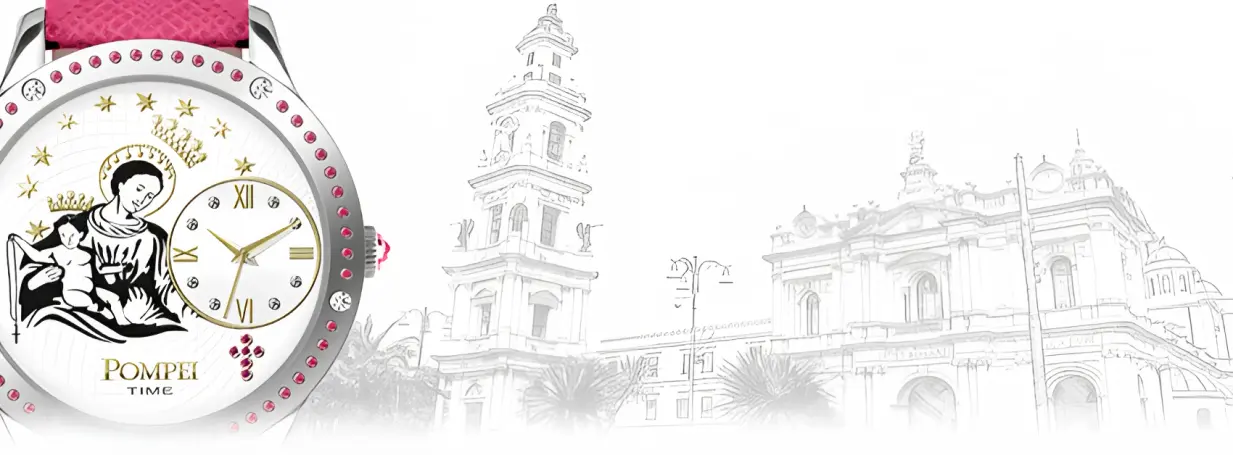


When we read or hear the name of this city, our mind immediately connects it to the historical events connected to it. The eruption of Vesuvius in 79 AD which in addition to the city of Pompeii also devastated those of Oplontis, Herculaneum and Stabia;
The erection of the Basilica of the Blessed Virgin of the Rosary of Pompeii, at the hands of Bartolo Longo, with the works begun towards the end of the 15th century and concluded in 1925 with the completion of the works on the Bell Tower.
More recent, however, are the visits of the last 3 Popes, present in Pompeii on the occasion of the Marian May during their pontificates. Pompeii therefore, together with Rome, can be considered an Eternal City. Pompei Luxury was therefore born to continue that sense of eternity that we want to give to the Neapolitan city.
In fact, the dial depicts the Blessed Virgin of the Rosary, a gift that Bartolo Longo received from Padre Redente (his confessor).
The history of this painting is also very particular: When Bartolo Longo received the painting, he rejected it, as it was in poor condition and did not respect the classical canons of the depiction of the Blessed Virgin of the Rosary;
in fact, the canvas depicted Santa Rosa and not Santa Caterina da Siena. Given the insistence of the nun who looked after this canvas, Bartolo Longo accepted the painting anyway and took it with him on a cattle cart,
and when Bartolo arrived in Pompeii, the dismay that had initially struck him also struck everyone else present; when the blanket was removed, the painting was revealed.
They all agreed that the painting could not be exhibited for fear of interdict, before even a partial restoration.
The successful restoration work led to the change of Santa Rosa with the classic Santa Caterina of Siena, and the adornment of the painting with Precious Stones, subsequently removed to avoid holes in the canvas.
The painting was crowned on April 23, 1965 by Pope Paul VI. Another feature of the watch is the presence of stones on the ring.
What's new about the presence of Crystals on a Watch Case? Their position! In fact, we note that for every ten Crystals of approximately 1.5 mm of the same colour, a larger Crystal (approximately 2.5 mm) of a different color alternates.
This alternation of Crystals forms a Rosary with five Mysteries, an object widely used in Christian worship since the Middle Ages, as a form of solemn prayer. Time in Pompeii therefore did not stop in 79 AD. C.. The time in Pompeii still strikes its hands today. Pompeii Time - Pompeii Eeternum.